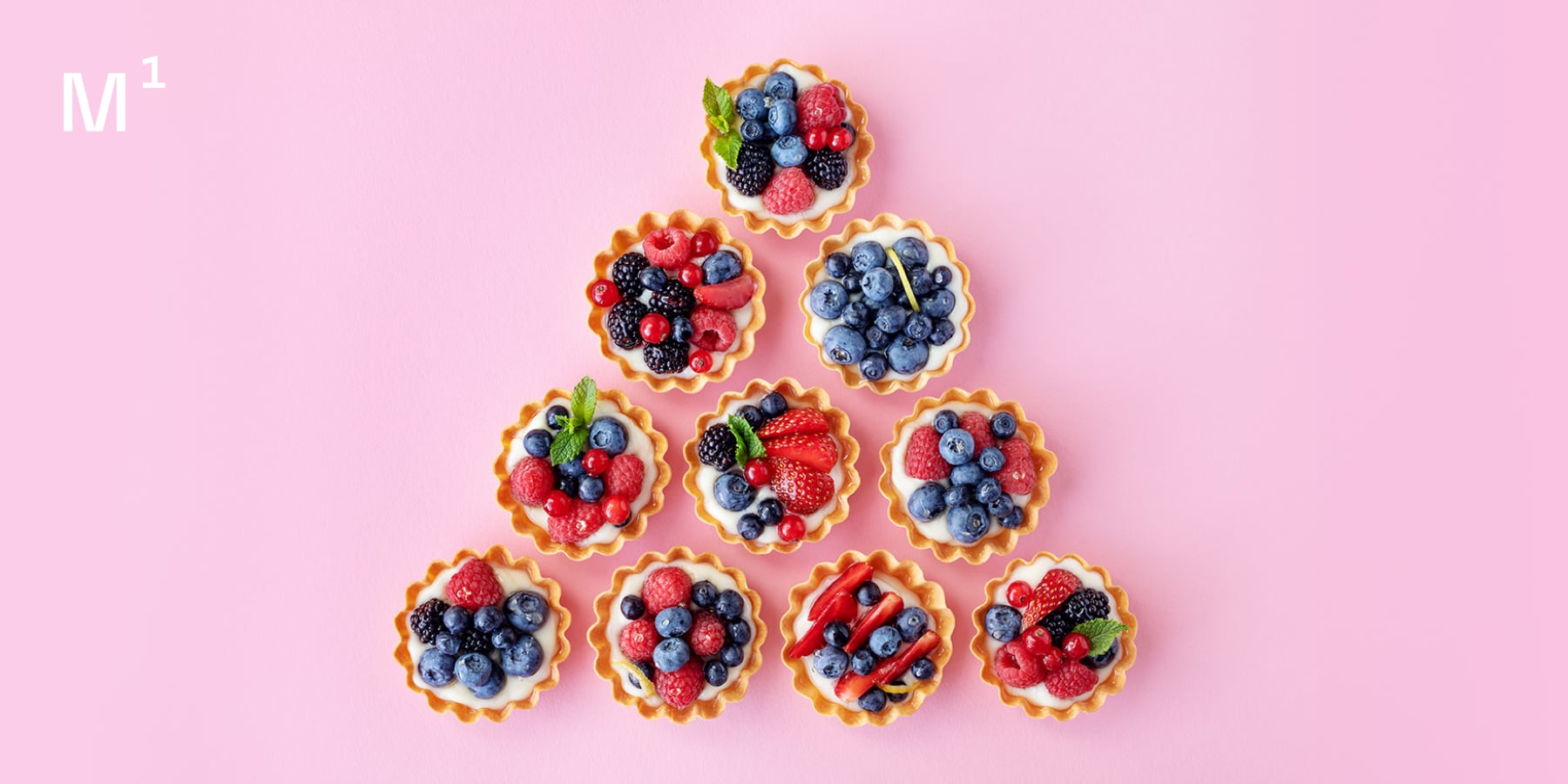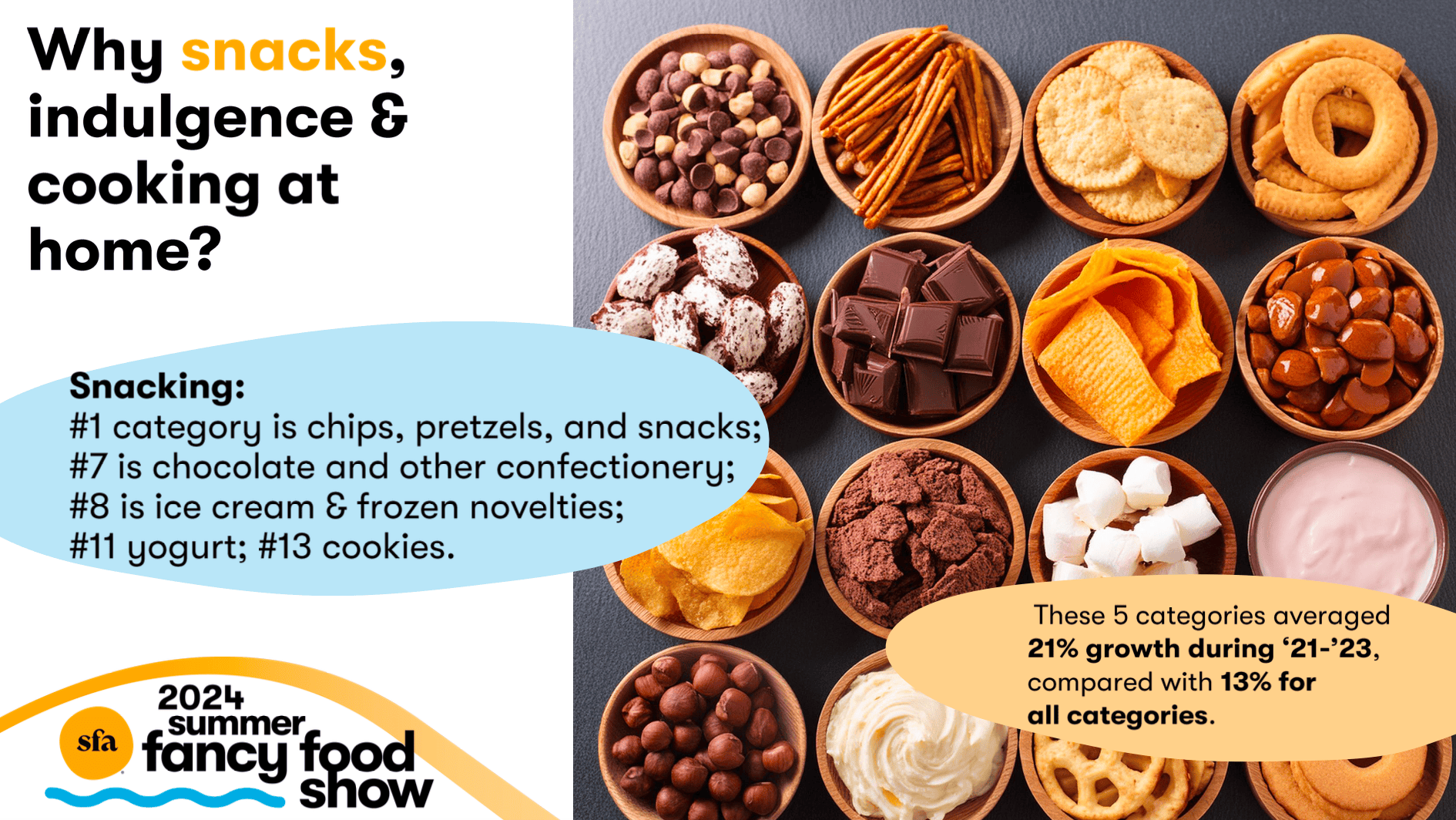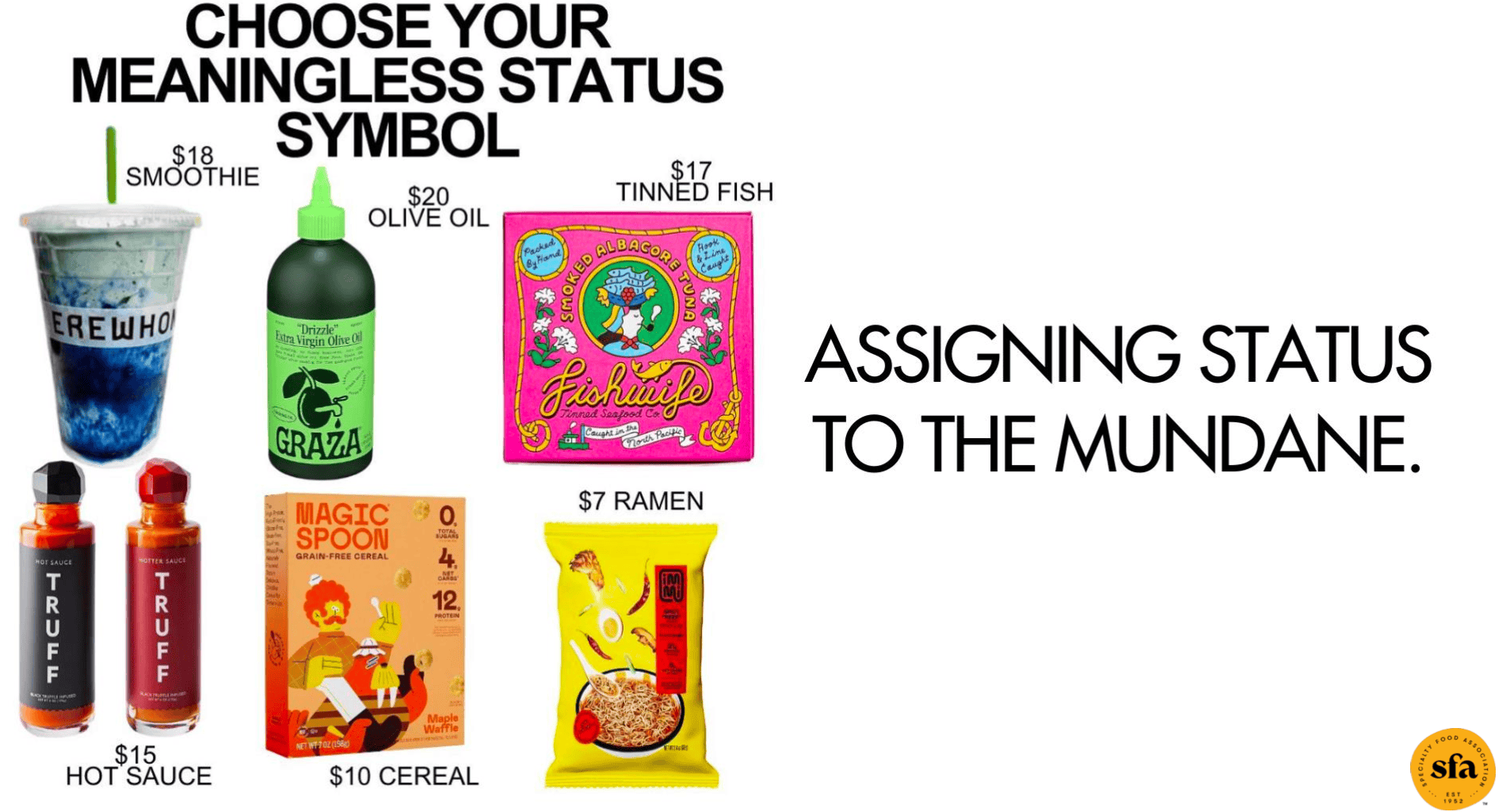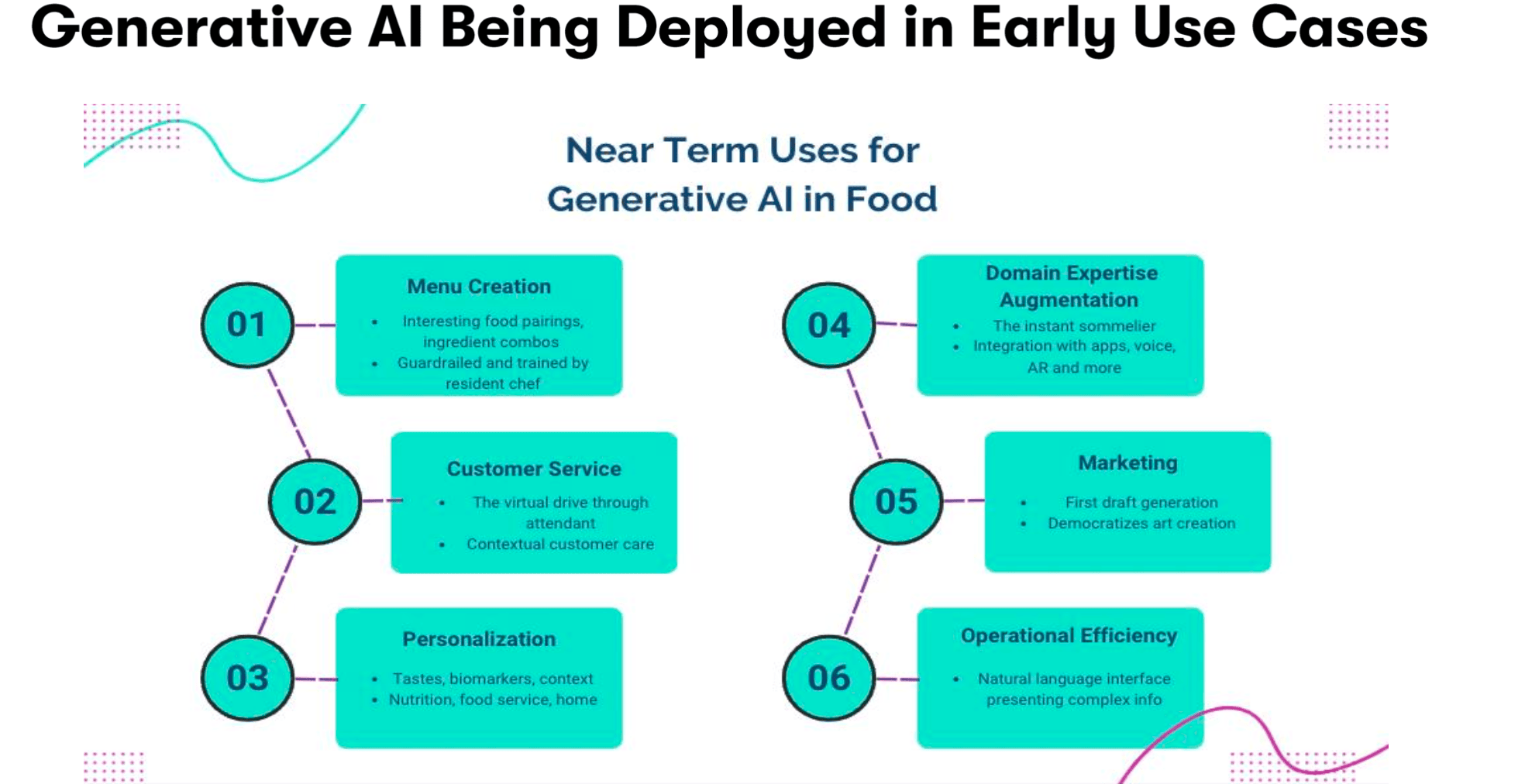
10 Essential Trends Driving Indulgence and Consumer Cravings
I spent three days at the Specialty Food Association’s Summer Fancy Food Show, diving headfirst into a world of indulgence and innovation. As a first-timer—and eight months pregnant!—my appetite was already primed for this experience. Armed with comfortable shoes, I set out to explore 2,400 exhibitors from 56 countries to better understand trends impacting our clients and the industry, particularly the indulgence space.
The sheer volume of exhibitors made it abundantly clear there’s no shortage of competition. Speakers discussed the evolving role of food, shaped by emotional needs, generational shifts, and industry-wide transformations. I’ve highlighted 10 trends that stood out to me. Spoiler alert: many of these focus on Gen Z and Gen Alpha, which is no surprise considering they account for 41% of the global population.
1. Not Everything Needs a Function
Functional benefits don’t carry the same weight across generations. While millennials ushered in the trend of functional foods—products enriched with protein, probiotics, adaptogens, etc.—Gen Z and Gen Alpha take a different approach. They are more likely to fill their diet with a balance of products. Gen Z’s buying patterns reflect the belief that not every product needs a functional purpose. I noticed a huge trend in products that fell squarely in the indulgence category.
Takeaway: If functional benefits aren’t core to your product, don’t force them. Pure indulgence is just as marketable. Instead, focus on what drives purchases – according to Menu Matters, that’s taste 69%, aroma 61%, visual 42%.
2. Better-for-You Snacks: Healthy Meets Indulgence
Health-conscious snacking remains popular, but now it’s about blending nutrition with indulgence to turn guilty pleasures into guilt-free treats (because despite trend #1, function still sells across generations). Many traditional indulgences—like chocolate bars and cookies—were featured with healthier makeovers. Think low-sugar chocolate bars or gluten-free cookie bites.
Takeaway: The trend of "mindful snacking" is here to stay. Consumers want it all—great taste, good-for-you benefits, and convenience. I found many of these healthy desserts to be lacking in the taste category, but behavioral science tells us that marketing something as “healthy” lowers people’s expectations of taste (check out this Consumer Behavior Lab episode on the topic).
3. Adventurous Eating & Global Flavors
This year’s show was a playground for flavor explorers. Asian-inspired snacks, Middle Eastern sweets, and Latin American treats all made appearances, showcasing how the global pantry is inspiring new products. Younger generations, particularly Gen Z, are embracing these influences—they love heat, spice, and fusion foods, and are less likely to avoid specific ingredients. They want items that can adapt to their changing preferences.
Takeaway: Flavor diversity and cultural inspiration are non-negotiable for brands looking to engage with adventurous consumers. Bold new products are a great way to connect with these consumers who, it’s worth noting, have the lowest brand loyalty of any generation. If launching a new product line isn’t in the cards, consider testing the waters with a brand collaboration to offer a limited release.
4. Snackification is on the rise
Snacking has become a lifestyle and snack foods were everywhere at the FFS. Research shows 94% of Gen Zs and Millennials snack daily, often replacing meals with smaller bites throughout the day. Snacks and indulgences averaged over 20% growth from 2021-2023, compared with 13% across all categories. This was a hot topic with the speakers and was reflected in the product mix on the show floor.
Takeaway: If your product fits into the snack category, you’re in a prime growth space. The challenge lies in standing out in a crowded landscape. Your marketing strategy is an essential component of success. The vendors that had clearly invested in their brand had much heavier foot traffic than those who had not.

5. Gen Z’s Mistrust
Gen Z is quick to call out inauthentic brands and has low trust in marketing claims—32% believe brands often try to take advantage of them (source: Menu Matters). This cohort expects transparency and authenticity and values brands that clearly communicate their purpose and values. In my conversations with brands at FFS, an increasing number led with their brand story rather than focusing on product attributes.
Takeaway: Telling a compelling brand story is crucial. While some fortunate brands have a masterpiece of brand story behind their product, others simply started with a good idea. If you fall in the latter camp, Method1 is an expert at uncovering what makes brands unique and crafting compelling brand stories that drive business. Authenticity isn’t a trend; it’s a necessity to win over younger consumers.
6. Brands as a Status Symbol
Andrea Hernandez of Snaxshot referred to this as “Snacks as Signalers.” This is contributing to heavy growth in the premium pantry aisle. Today’s consumers view pantry items not just as sustenance but as status symbols. Premium products—like $18 Erewhon smoothies or boutique olive oils—communicate identity. Brands that look good inside AND outside your pantry were everywhere at this year’s show.
Takeaway: Brand-building is more important than ever. It’s not just about great products but about cultivating a lifestyle around them. Gen Z is willing to spend more on groceries than previous generations and curating the perfect grocery aesthetic is trending. Cost-conscious consumers have also devised a few workarounds to “hack” this trend—refilling luxury containers with cheaper alternatives (“Trojan Horsing with packaging”) and taking pictures next to products despite not actually buying them.
Fun Fact: A renovation report revealed that millennials’ most remodeled space is the pantry. People are curating their pantry items for “shelfies,” reflecting their identity and values through what they stock.

Source: Snaxshot
7. Surprise! AI Impacts Specialty Foods
AI was a hot topic. From route optimization for shipping, to recipe development and tackling food waste, AI is helping brands streamline processes and improve outcomes. Sessions featured many start-ups that are leveraging AI to help solve pain points for CPG brands. These companies were quick to point out that AI is not at odds with the tangible, organic roots of food. They suggested viewing it as a way to optimize what ends up on the plate to make better foods.
Takeaway: As with all industries, AI is here to stay. For CPG brands, encourage your teams to explore AI by starting with low-risk experiments. Find problems of low consequence and ask AI to help solve them.

8. Collaborations Are Key
Collaborations are booming, with both expected and unexpected partnerships—think Pringles x Crocs, or the sticker I saw on a watermelon last week from the Highway Safety Administration advising me to “protect my melon.” Gen Z loves playful, surprising mash-ups, and brands are leveraging these to boost exposure across retail and e-commerce.
Takeaway: Don’t limit collaborations to other food brands. The more surprising, the better—anything that catches attention and creates buzz is worth exploring.

9. Shelf Simplization
Nearly 40% of retailers plan to reduce SKUs over the next 12 months, despite consumers wanting more variety. This creates a paradox: fewer items on shelves, yet higher expectations for what remains.
Takeaway: Brands need to stand out visually and conceptually. It’s essential to know why your product belongs on the shelf and how to communicate its value clearly to both retailers and consumers.
10. Nostalgia with a Modern Twist
Nostalgia remains a powerful force in the industry. From Y2K-inspired packaging to revamped childhood favorites, brands are revamping classic products with modern flair.
Takeaway: Nostalgia isn’t just about looking back; it’s about reimagining beloved flavors and experiences for today’s audience. One way of embracing this trend is to find things that are familiar and add them to something unexpected (e.g., fancy strawberries). Innovation mixed with nostalgia is driving the newstalgia trend, and consumers across generations are here for it.
The 2024 Fancy Food Show demonstrated how dynamic the indulgence industry has become. From AI integration to embracing global flavors in traditional products, brands are pushing boundaries to meet the evolving tastes of younger consumers. If your brand operates in this space, it’s critical to understand these shifts and align your product and marketing strategies accordingly.
Could one or more of these trends impact your business? Let’s connect and explore how to position your brand for success in this ever-changing landscape.
Ready to
make your brand
irresistible?
